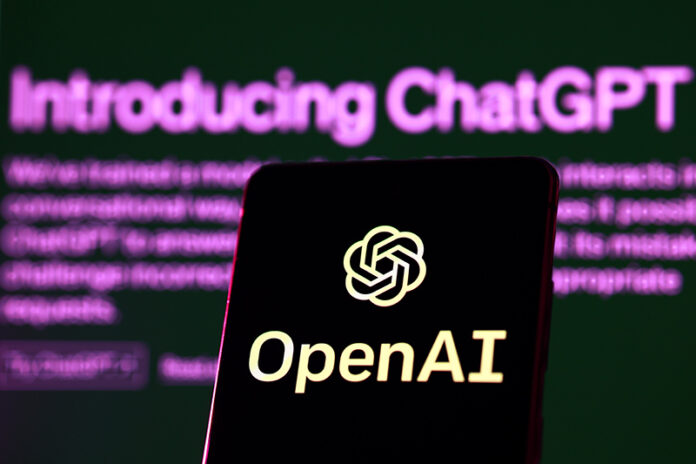By Hervé Legenvre and Erkko Autio
This article is part two of the ongoing series—The AI Power Plays—that explores the fiercely competitive AI landscape where tech giants and startups battle for dominance while navigating the delicate balance of competition and collaboration to stay at the cutting edge of AI innovation.
The Mission of OpenAI: Benefiting Humanity
OpenAI was founded with a bold vision: to ensure that the development of artificial intelligence would benefit all humanity. Contrary to popular belief, OpenAI was never meant to be a purely open-source research group. Instead, its primary focus was to pre-empt a scenario where AI technologies would be controlled by a few large tech companies at the expense of the humankind. Established as a non-profit organization, OpenAI sought to democratize AI development and ensure that this powerful technology would serve the common good instead of narrow private interests.
But as the field of AI has evolved, OpenAI has started to migrate towards a more closed-source strategy. What was it that prompted this volte-face in OpenAI strategy?
The Technical Turning Point: Google’s Discovery of Transformers
In 2017, Google introduced transformers to the World—a groundbreaking model architecture that changed the course of AI technology. The transformer architecture enabled AI systems to capture patterns and nuances that underpin powerful AI models. However, the catch was that this architecture requires very large datasets to train those models. The transformer breakthrough initiated a shift in the AI landscape, where size, data, and computing power became key drivers of technological advancement.
Suddenly, AI leadership was driven by a “bigger is better” philosophy. The more data a model could be trained on and the more computing power it could leverage, the better the outcomes became. To compete at the cutting edge of this new AI race, organizations needed access to massive and costly computing capabilities.
OpenAI’s Microsoft Partnership: Navigating the Need for Scale
OpenAI soon realized that to continue developing its frontier models and keep pace with the new “bigger is better” trend, it needed access to vast computing resources—resources that only a tech giant like Microsoft could provide. This led to OpenAI forming a series of partnerships with Microsoft from 2019 to 2023, culminating in Azure, Microsoft’s cloud platform becoming the exclusive commercial partner of OpenAI. In 2019, OpenAI already created a for-profit subsidiary. This move naturally raised eyebrows. To mitigate any backlash, OpenAI introduced a capped-profit structure to ensure that its core mission of benefiting humanity would remain. Nevertheless, this shift represented a critical evolution in how OpenAI operated, elevating revenue generation as a strategic objective for OpenAI.
The Release of ChatGPT: A Global Phenomenon
In late 2022, OpenAI released ChatGPT, a conversational AI tool that took the World by storm. This tool quickly became a brand on its own, with skyrocketing adoption of the service. The chatbot’s success put OpenAI in the spotlight, but it also placed the company under immense pressure to continue developing and monetizing its technology.
Given the ultra-rapid pace of AI advances, which make Moore’s Law look like a snail, AI models that are cutting-edge today can be obsolete within just six months. For OpenAI to stay ahead of its competitors and maintain its technology leadership, it had to keep boosting its model development effort—a process that requires enormous financial and computational resources.
Why Is OpenAI Moving Towards a Closed-Source Strategy?
One of the most significant shifts in OpenAI’s strategy has been its pivot towards a more proprietary mode that puts emphasis on harnessing ChatGPT for revenue generation. This transition was not without controversy, but it stemmed from a very practical necessity: OpenAI needs to generate revenue to sustain its costly model training and research efforts.
Unlike tech giants such as Google and Meta that can leverage AI to boost their revenue from their established services such as advertising, OpenAI does not have complementary revenue streams that its AI models could support. For OpenAI, the only way to generate significant revenue is by monetizing its technology directly—either through paid access to its chatbot, ChatGPT, or by providing companies access to its advanced AI models.
Keeping Up with a Hypercompetitive AI Market
The pace of innovation in AI is relentless. Without complementary businesses to support its AI advancements, OpenAI’s survival hinges upon its ability to remain at the cutting edge of AI development. The company must not only maintain its technology leadership, as it also needs to effectively monetize its technology. To achieve this, according to press articles, OpenAI generates revenue through ChatGPT subscriptions, projected to reach $2.7 Billion in 2024, and through API access to its models, which should bring in an additional $1 Billion by enabling clients to build their own AI-based applications.
Today’s Reality: Revenue Is Growing, but Costs Are Growing Even More Rapidly
Although OpenAI is expected to continue to increase its revenue from AI models, the company’s operational costs still far exceed its earnings. The cost of the computing power needed to train and run advanced AI models is astronomical, even for a startup as hyped as OpenAI. As a result, the company is considering raising the price of ChatGPT subscriptions.
Despite generating impressive revenue growth, the company is expected to post a staggering $5 Billion loss in 2024. To address this financial strain, OpenAI is considering transitioning to a fully for-profit model, a move that has already led to the departure of several key employees who feel the shift conflicts with the company’s original mission.
Adding to this uncertainty, reports suggest that Apple is reconsidering its potential investment in OpenAI, raising further questions about the company’s financial future. Nevertheless, this did not prevent OpenAI to raise $6.6 billion from investors including Microsoft and Nvidia.
A Business Model Unlike Web 2.0 Startups
OpenAI operates in a vastly different economic landscape compared to web 2.0 startups such as Facebook and Instagram. In the world of AI, scaling does not necessarily mean lower costs and more network effects. In fact, the opposite may be true. As AI models grow in complexity, their training costs may increase disproportionately.
Where traditional tech startups could rely on a large user base, powerful network effects, and interconnected open-source software built on top of an affordable cloud infrastructure, OpenAI must continuously invest in costly proprietary technology development to stay ahead of competitors. And as OpenAI’s long-term revenue prospects likely lie in the business-to-business (B2B) sector, the company will need to develop strong sales and business development capabilities, which are difficult to build from scratch.
At OpenAI, the shift towards a proprietary closed-source model reflects the harsh economic realities of running an AI company without complementary products that benefit from the technology and help offset development costs. The economics of AI are fundamentally challenging, offering no easy path to profitability.
Coming next in the AI Power Play series:
- Google and AI: The Tech leader that had a perfect AI plan till fall 2022
- Why most Tech companies want to collaborate with Hugging face?
Also in the AI Power Play series:






































